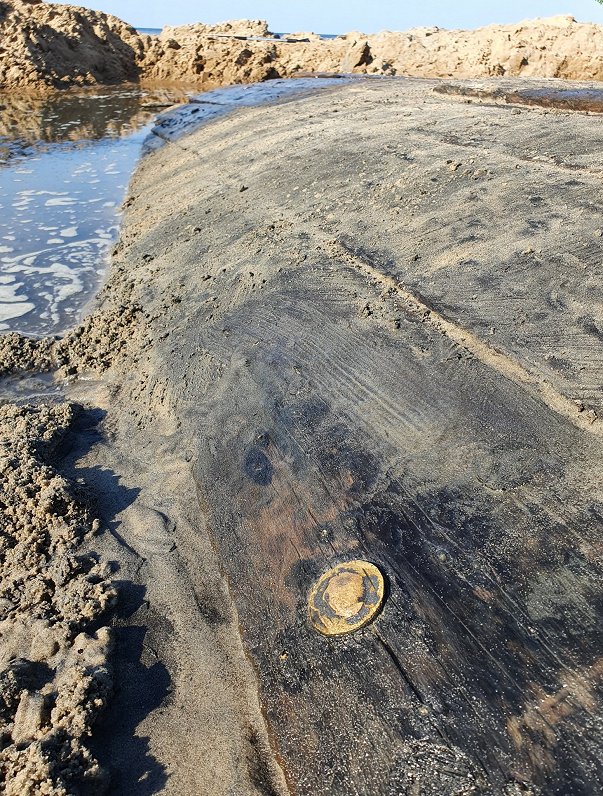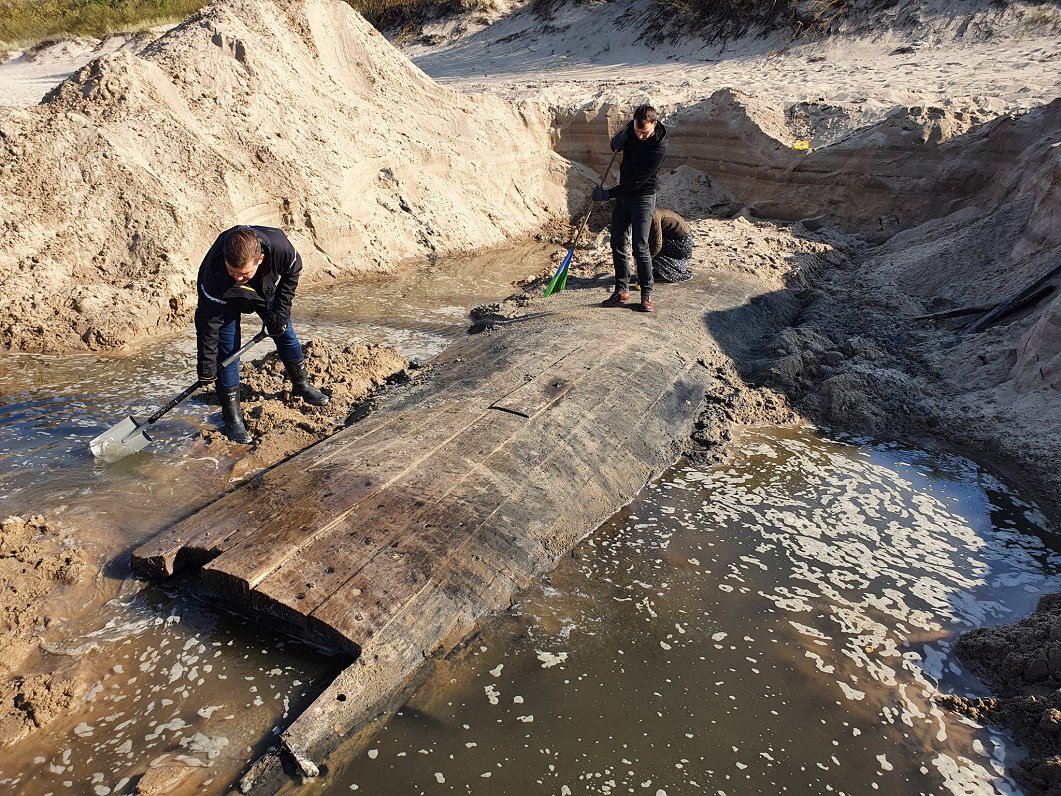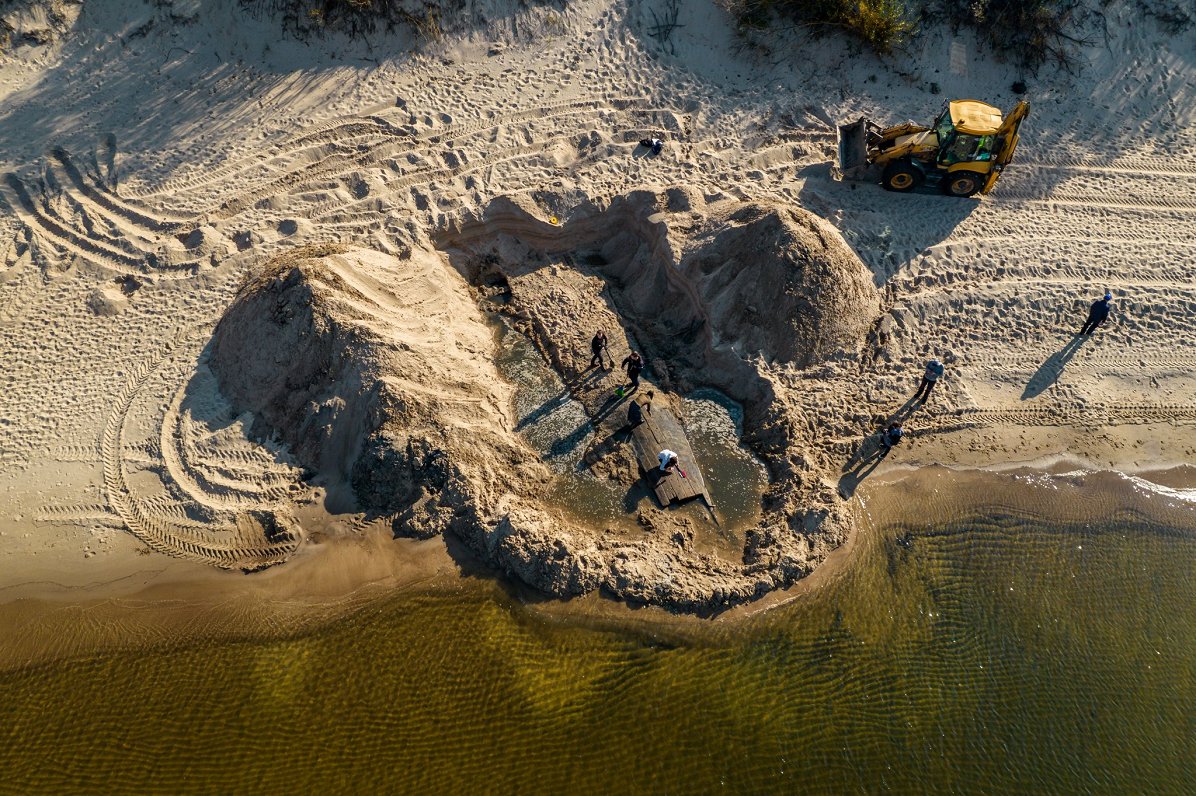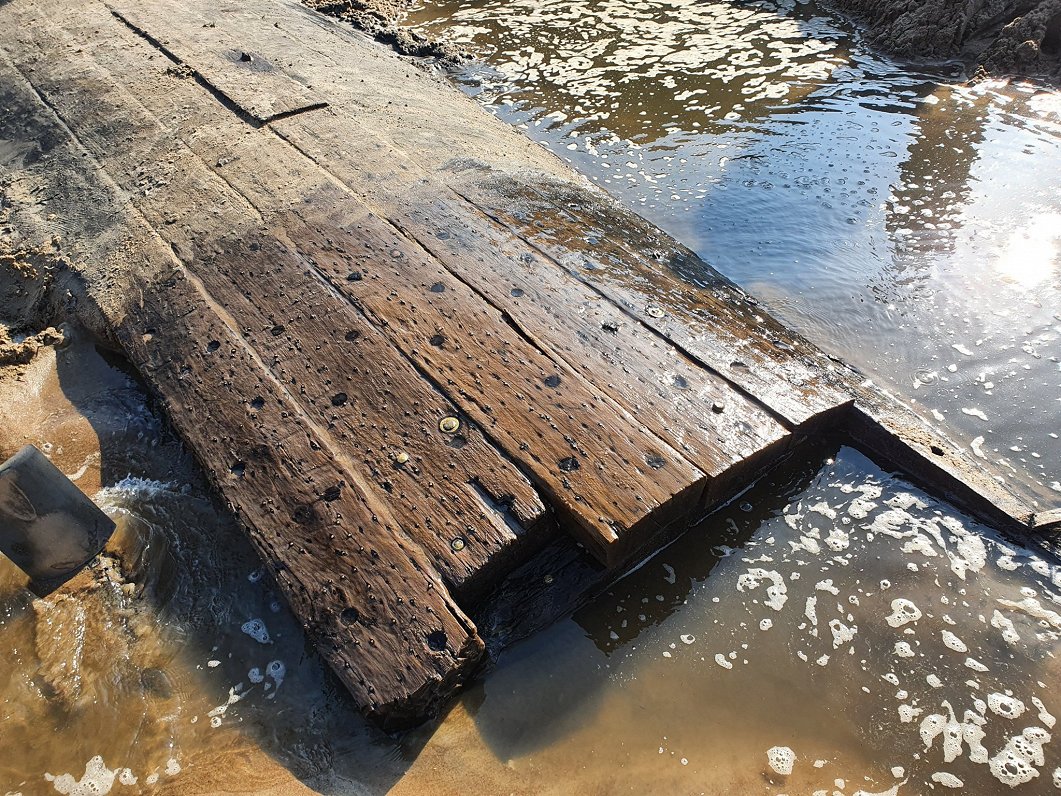Two weeks ago, the Office and the Freeport of Rīga received information from the association “Bolderājas grupa” about a fragment of a wooden shipwreck exposed on Daugavgrīva beach. When inspecting the object, the employees of the administration found that three ends of oak cladding boards have been exposed on the water's edge, but under the tidal sand it is possible to feel that the wreck fragment is at least 1.3 m x 4 m in size. Soon, as the water level rose, part of the wreck disappeared under the waves again.

In the middle of last week, the wreck was exposed again and with the permission of the Authority, the employees of the Freeport of Riga began excavating the fragment of the wreck, quickly revealing that the wreck is much larger than originally estimated - it is at least 12 m long, 3.5 m wide.
The exposed fragment is the side of an oak-built ship, and only its exterior, covered with massive, 25 cm wide and 8 cm thick planks, is visible. They are attached to the ribs of the ship, which were not yet possible to measure, with both wood and copper pins. Thousands of small copper nails remain on the outside of the side, which indicates that the ship was clad with copper plates and this is the part of the side that was under water when the ship was in use. There is a pronounced curvature on the side of the ship, which begins to level towards the end of the fragment, which probably indicates that the bow of the ship may be in the direction of the dunes.
It is still difficult to draw precise conclusions, but the fact that the ship was clad with copper plates indicates that it is either a warship or a long-distance merchant ship that has sailed not only through the Baltic and North Seas, but also on further voyages to the tropics. Copper cladding was first used by British boats in the late 18th century, so most likely the wreck dates from the 19th century.

Knowing that the current coastal area near the Daugavgrīva lighthouse was formed and strengthened only in the middle of the 19th century, it might be that this wreck could be dated to the first half of the 19th century - so it is about 150-200 years old. On the other hand, the lack of saw marks and copper plates at the end of the wreck indicates that the shipwreck was at least partially divided into timber after the accident and the valuable copper plates were removed from it.
In order to ensure the continued preservation of the wreck and protect the wooden structures from rapid degradation in the sun and air, together with the representatives of the Freeport of Riga it was decided to fill the site so that it could return to moisture and coolness, where it has been well preserved for at least 150 years.
This week, the Board will decide on granting the status of a newly discovered cultural monument to the wreck exposed on Daugavgrīva beach. This will make it possible to carry out the necessary additional research in the near future to find out its size and more accurate date, as well as ensure further preservation of the wreck.
View a 3D shipwreck model here.























